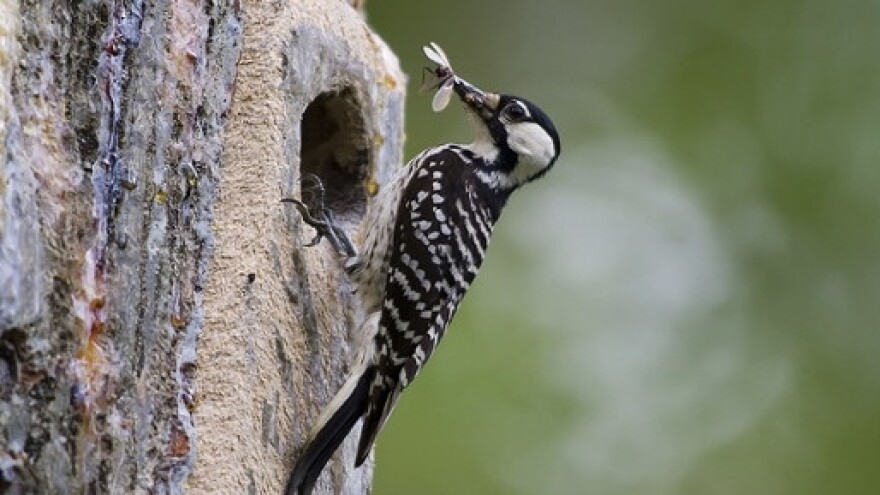The red-cockaded woodpecker, which has native habitats throughout Florida, may soon come off the federal list of endangered species.
That's because the situation facing the woodpecker is improving thanks to decades of conservation efforts, according to the U.S. Fish and Wildlife Service.
The red-cockaded woodpecker can be found in the southeastern United States and, locally, in the Cary State Forest and Osceola National Forest.
There were fewer than 2,000 clusters of the woodpecker — pockets or networks of the species living together— in 1970 but more than 7,500 by FWS estimates this year.
"A vast majority of populations are stable and growing, and threats to the red-cockaded woodpecker have been successfully managed," said Jennifer Koches, an FWS spokeswoman.
While the change would normally result in decreasing protections, the proposal from FWS would maintain many of the legal protections currently afforded to red-cockaded woodpeckers despite the downgrade to "threatened" status.
That includes banning harassment, harm, capture and collection of the bird. The proposal also would regulate the actions of federal agencies that could jeopardize populations of the woodpecker.
However, there would be some exceptions granted when it comes to activities that could harm individual woodpeckers, which FWS says would be more beneficial to the species long term.
"For example, this species is only found in fire-maintained open pine forests. We want to encourage more land managers to utilize prescribed fire, even though there is a minimal risk that a fire may impact a foraging or nesting tree." Koches said. "We need more prescribed fire to manage these large tracts of land for the species."
The red-cockaded woodpecker, differentiated by other woodpeckers by a speckled back and red streak on the white cheeks of males, are unique for nesting exclusively in living trees, usually long-leafed pines.
While their population has seen big improvements, especially in other states, wildlife conservation groups remain concerned about the fate of the bird species.
"In 2018, Hurricane Michael caused considerable damage to the Apalachicola National Forest — the heartland of RCWs. It was a stark reminder that we need a robust network of suitable habitats to support any species over the long term," said Chris Farrell of Audubon Florida. "Further, it exemplifies the need for the U.S. Fish and Wildlife Service to consider climate change — and the likelihood of more intense storms — in future evaluations of risk for the RCW and other listed species."
The fish and wildlife service initially proposed downgrading the red-cockaded-woodpecker's classification in 2020, but after receiving feedback that the new regulations surrounding the bird were too vague, the agency revamped the rules and reopened the process to public comment this week.
Members of the public interested in commenting on the rule change can do so at this link, which includes what regulations are being put in place and what other public comments have been submitted so far.
The deadline to submit a public comment is March 7.


